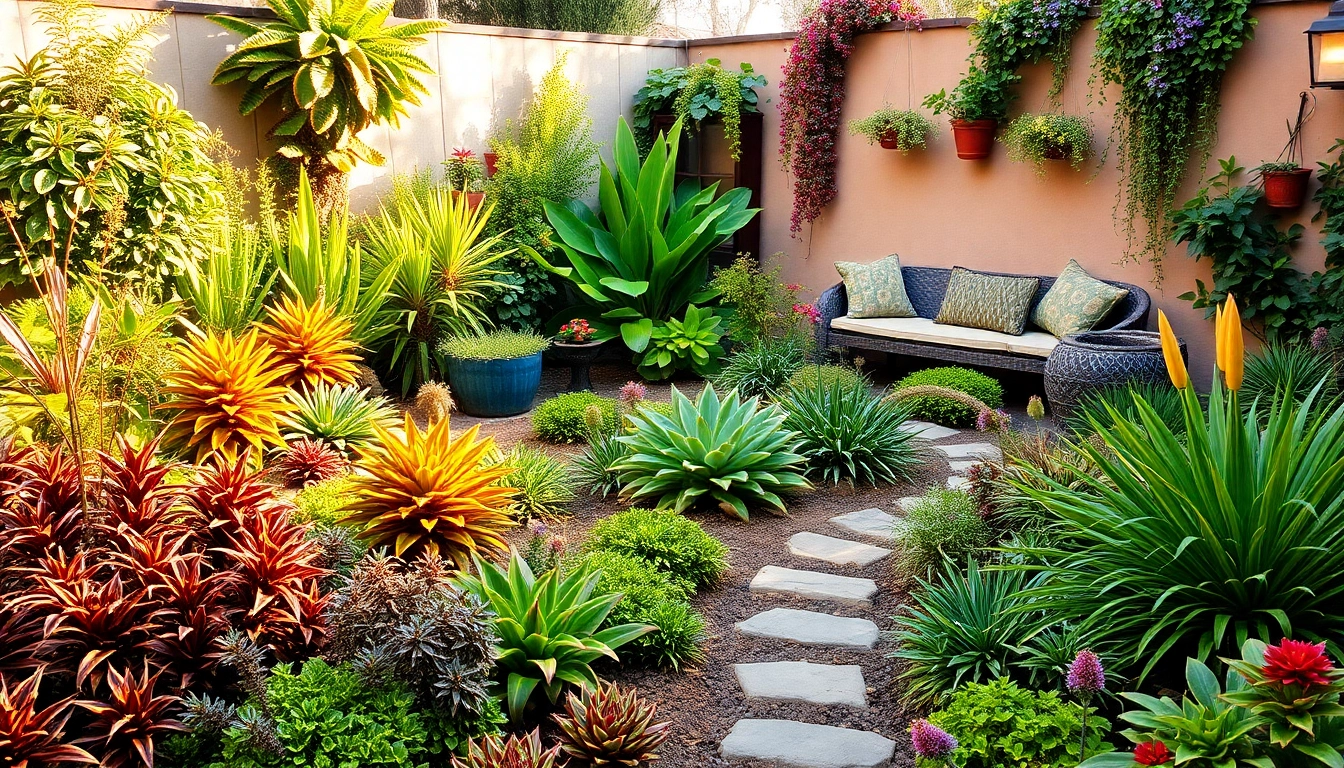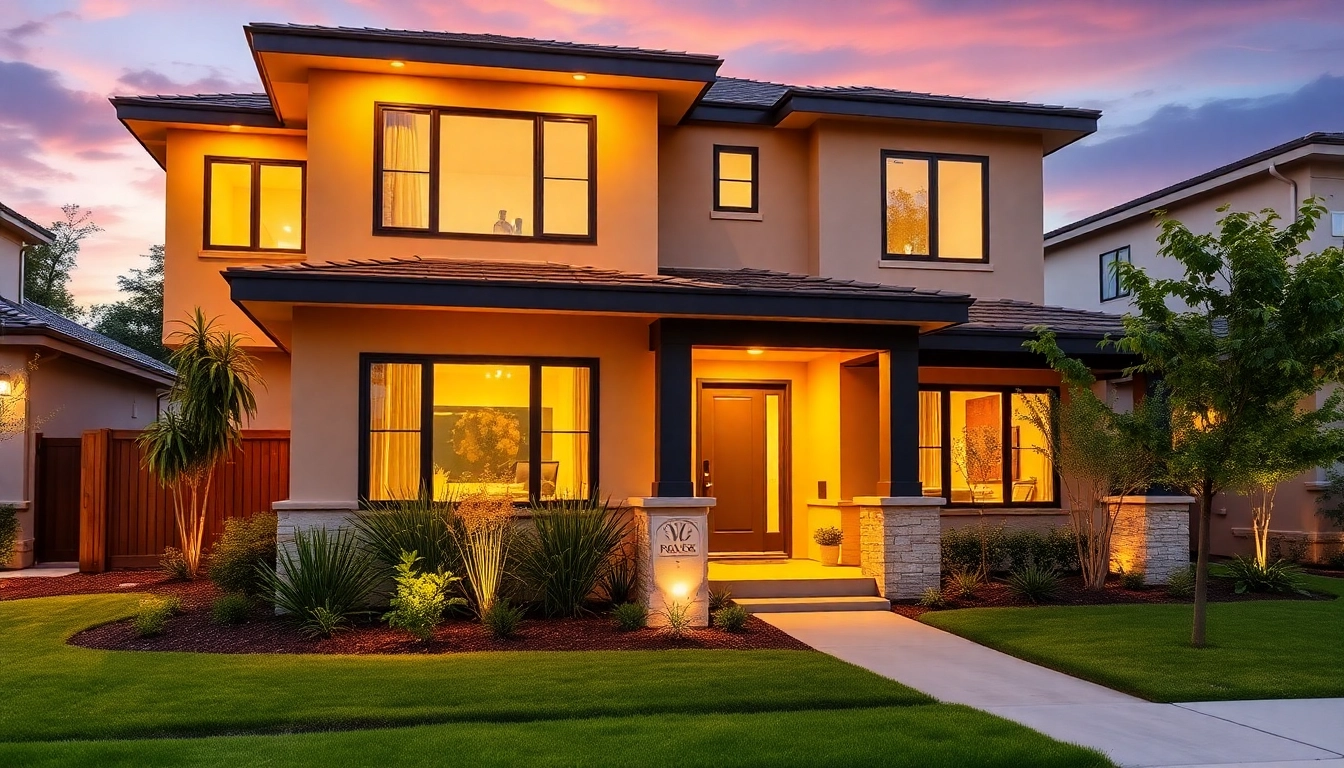Understanding Landscape Design Services
Landscape design is an essential aspect of creating outdoor spaces that are not only functional but also visually appealing. Whether you’re looking to enhance your garden, create a welcoming front yard, or establish a serene backyard oasis, professional landscape design service can make a significant difference. In this article, we will explore the nuances of landscape design, the benefits of hiring professionals, and essential trends that can transform your outdoor environment.
What is Landscape Design?
Landscape design is the art and science of designing outdoor spaces with a focus on aesthetics, functionality, and sustainability. It involves integrating various elements such as plants, trees, shrubs, hardscapes (patios, walkways, walls), and water features to create a cohesive and visually appealing environment. Landscape designers assess the existing landscape conditions, understand the client’s needs, and create a comprehensive design plan that addresses both the practicalities and the beauty of the space.
Benefits of Professional Landscape Design Services
Hiring a professional landscape designer provides numerous advantages:
- Expert Knowledge: Landscape designers have extensive training and knowledge about plant biology, soil composition, and local climate conditions, ensuring that your outdoor space is optimized for growth and sustainability.
- Creative Vision: Professional designers possess a keen aesthetic sense, allowing them to create visually harmonious spaces that align with your preferences and the architecture of your home.
- Time Savings: Managing a landscaping project can be time-consuming. A professional will efficiently handle design, sourcing materials, and coordinating installations, saving you significant time and effort.
- Increased Property Value: Well-designed landscapes can enhance the curb appeal of your home, potentially increasing its market value and attractiveness to potential buyers.
- Innovative Solutions: Designers can offer innovative solutions for difficult landscaping challenges, ensuring the functionality and aesthetics of the space.
Common Landscape Design Trends
As landscape design continues to evolve, several trends have emerged that can significantly enhance the appeal and functionality of outdoor spaces:
- Sustainable Landscaping: With an increasing focus on environmental sustainability, many designers incorporate drought-resistant plants, native species, and eco-friendly materials into their designs.
- Outdoor Living Spaces: There is a growing trend toward creating outdoor rooms that serve as extensions of the home, featuring elements like kitchens, dining areas, and lounging spaces.
- Smart Technology Integration: Incorporating technology such as automated irrigation systems and outdoor lighting is becoming more popular, providing convenience and efficiency for homeowners.
- Minimalist Designs: Many homeowners are opting for simpler, more minimalistic designs that focus on clean lines and functionality, moving away from overly ornate landscaping.
- Vertical Gardens: As space becomes increasingly limited in urban areas, vertical gardens are gaining popularity as an innovative way to bring greenery into small spaces.
Key Elements of Successful Landscape Design
Plant Selection and Placement
Choosing the right plants is a critical factor in successful landscape design. It involves considering the climate, soil type, and sun exposure of your space, as well as the aesthetic preferences of the homeowner. Here are some factors to keep in mind:
- Native Plants: Selecting native plants can provide various benefits including lower maintenance, better adaptation to local soil and climate, and support for local wildlife.
- Plant Size and Growth Habit: Consider not only the current size of plants but also their expected growth. Adequate spacing must be planned to prevent overcrowding and to ensure that each plant can thrive.
- Seasonal Interest: Incorporating a variety of plants that bloom in different seasons can provide year-round aesthetic appeal.
Hardscaping Techniques and Materials
Hardscaping refers to the non-plant elements in landscape design, such as pathways, patios, walls, and decks. The choice of materials plays a key role in the durability, functionality, and visual appeal of these elements:
- Natural Stone: Stone materials like granite and limestone lend a timeless look to hardscapes and can withstand the elements.
- Pavers: Available in various styles and colors, pavers can create stunning pathways and patios while allowing for flexibility in design.
- Wood Features: Wood can add warmth and character to hardscaping, especially when used for decks, benches, and fences. However, proper treatment and maintenance are necessary to ensure longevity.
Maintenance Strategies for Longevity
Regular maintenance is vital for sustaining the beauty and functionality of your landscape design. Here are some strategies to consider:
- Regular Pruning: Keeping plants pruned not only enhances their appearance but also promotes healthy growth and mitigates potential disease.
- Seasonal Clean-up: Removing debris, dead plants, and fallen leaves in every season can help prevent pests and diseases.
- Mulching: Applying mulch can help retain soil moisture, suppress weeds, and improve soil fertility as it decomposes.
Evaluating Your Outdoor Space
Assessing Site Conditions for Optimal Design
Before embarking on a landscape design project, it’s essential to assess your site’s conditions:
- Soil Testing: Understanding the soil type and its pH can significantly affect plant selection and overall landscaping success.
- Sunlight Exposure: Observing how sunlight moves across your garden throughout the day can help in the placement of plants, especially those requiring full sun or partial shade.
- Drainage Issues: Identifying any drainage problems early can help you design an effective landscape that avoids water accumulation.
Identifying Your Needs and Preferences
Every outdoor space should reflect the needs and preferences of its inhabitants. Key considerations include:
- Functionality: Consider what you want from your landscape, such as play areas for children, spaces for entertaining guests, or tranquil corners for relaxation.
- Aesthetic Preferences: Document styles, colors, and designs you are drawn to; this will help guide the designer in curating a landscape that resonates with you.
- Future Expansion: Think about how your landscape might evolve over the years—planning for growth can be invaluable.
Budgeting for Landscape Design Services
Understanding the financial aspect of landscape design is crucial. Here are some guidelines for budgeting effectively:
- Set a Realistic Budget: Determine how much you are willing to invest in your landscape project. Research average costs for various elements to establish a basis.
- Prioritize Features: Identify key features that are most important to you, and allocate funds accordingly.
- Consider Maintenance Costs: Factor in ongoing maintenance costs, as these can accumulate over time.
Choosing the Right Landscape Design Service
What to Look for in a Landscape Designer
When selecting a landscape designer, there are several key qualities to look for:
- Experience and Qualifications: A qualified designer will have relevant training and a portfolio that showcases their expertise.
- Communication Skills: A good designer will listen to your needs and communicate ideas clearly, ensuring you are involved in the design process.
- Creativity: Look for a designer who demonstrates originality and creativity in their work.
Questions to Ask Before Hiring
Before making a final decision, ask potential designers specific questions to gauge their capabilities and suitability for your project:
- What is your design process?
- Can you provide references or testimonials from past clients?
- How do you handle project timelines and potential challenges?
- What is included in your service fee?
- How often will we communicate during the project?
Reviewing Portfolios and Client Testimonials
A designer’s portfolio provides insight into their style, range, and ability to meet diverse client needs. When reviewing portfolios:
- Diversity of Projects: Check if the designer has experience with a variety of styles and project types.
- Client Feedback: Look for testimonials that highlight both the design process and the final result, focusing on customer satisfaction.
- Attention to Detail: Evaluate the design details in the portfolio—consideration of plants, materials, and overall aesthetics.
Measuring Success in Your Landscape Project
Setting Clear Goals and Expectations
Effective landscape design starts with clear objectives. By setting measurable goals, you can assess the success of your project:
- Define Success: What does success look like for you? This could range from increased curb appeal to enhancing outdoor usability.
- Timeframes: Establish realistic timelines for project completion and evaluate whether these are met throughout the process.
- Budget Adherence: Regularly assess whether the project stays within budget, as financial overruns can be a significant concern.
Evaluating the Design After Completion
After the project is complete, it’s crucial to review the outcomes against the initial goals:
- Functionality Check: Are the spaces serving their intended purpose? Evaluate how functional elements like patios, pathways, and gathering spaces work.
- Aesthetic Appeal: Are you satisfied with how the design looks and feels? Does it align with your vision and preferences?
- Feedback Loop: Share your thoughts with the designer; this feedback can be beneficial for both parties, leading to improvements in future designs.
Long-term Care and Adaptation of Your Landscape
Landscaping is not a one-time endeavor; it requires ongoing care and occasional adjustments. Here are strategies for maintaining and adapting your landscape:
- Regular Maintenance: Develop a regular maintenance schedule that includes watering, pruning, and seasonal cleanup.
- Adapt to Changes: Pay attention to how your plants are growing—some may require relocation or replacement as they mature.
- Embrace New Trends: Stay informed about landscape trends and innovations that can enhance your outdoor space over time.



